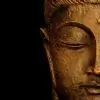watch full documentary - fabrication of aryan invasion theory
http://www.youtube.com/watch?v=uKyn3FDaTYc
download this documentary for free - http://devavision.org/videos.html
Early indologists wished to control & convert the followers of Vedic Culture, therefore they widely propagated that the Vedas were simply mythology.
Max Muller, perhaps the most well known early sanskritist and indologist, although later in life he glorified the Vedas, initially wrote that the "Vedas were worse than savage" and "India must be conquered again by education... it's religion is doomed"
Thomas Macaulay, who introduced English education into India wanted to make the residents into a race that was: "Indian in blood and color, but English in taste, in opinion, in morals, and in intellect."
However, the German Philosopher Arthur Schopenhauer stated that the Sanskrit understanding of these Indologists was like that of young schoolboys.
These early Indologists:
• Devised the Aryan Invasion theory, denying India's Vedic past
• They taught that the English educational system is superior
• They intentionally misinterpreted sanskrit texts to make the Vedas look primitive.
• And they systematically tried to make Indians ashamed of their own culture
• Thus the actions of these indologists seems to indicate that they were motivated by a racial bias.
Facts -
• There is no evidence of an Aryan homeland outside of India mentioned anywhere in the Vedas. On the contrary, the Vedas speak of the mighty Sarasvati River and other places indigenous to India. To date, no evidence for a foreign intrusion has been found, neither archaeological, linguistic, cultural nor genetic.
• There are more than 2,500 Archaeological sites, two-thirds of which are along the recently discovered dried up Sarasvati River bed. These sites show a cultural continuity with the Vedic literature from the early Harrapan civilization up to the present day India.
• Several independent studies of the drying up of the Sarasvati River bed, all indicate the same time period of 1,900 B.C.E.
• The significance of establishing this date for the drying up of the Sarasvati River is, that it pushes the date for the composition of the Rig Veda back to approximately 3,000 B.C.E., as enunciated by the Vedic tradition itself.
• The late dating of the Vedic literatures by indologists is based on speculated dates of 1,500 B.C.E. for the Aryan Invasion and 1,200 B.C.E. for the Rig Veda, both now disproved by scientific evidence.
Max Muller, the principal architect of the Aryan Invasion theory, admitted the purely speculative nature of his Vedic chronology, and in his last work published shortly before his death, The Six Systems of Indian Philosophy, he wrote: "Whatever may be the date of the Vedic hymns, whether 15 hundred or 15,000 B.C.E., they have their own unique place and stand by themselves in the literature of the world."
The Vedic Culture is indigenous to India
It can be scientifically proven that the Vedic Culture is indigenous, through archaeology, the study of cultural continuity, by linguistic analysis, and genetic research.
For example, the language and symbolism found on the Harappan seals are very Vedic. We find the Om symbol, the leaf of the Asvatta or holy banyan tree, as well as the swastika, or sign of auspiciousness, mentioned throughout the Vedas. Om is mentioned in the Mundaka and Katha Upanisads as well as the Bhagavad Gita.
here read more - http://www.archaeologyonline.net/artifacts/scientific-verif-vedas.html
<> David Frawley
http://www.sol.com.au/kor/16_01.htm
Why aryan theory was faked?
First, it served to divide India into a northern Aryan and southern Dravidian culture which were made hostile to each other. This kept the Hindus divided and is still a source of social tension.
Second, it gave the British an excuse in their conquest of India. They could claim to be doing only what the Aryan ancestors of the Hindus had previously done millennia ago.
Third, it served to make Vedic culture later than and possibly derived from Middle Eastern cultures. With the proximity and relationship of the latter with the Bible and Christianity, this kept the Hindu religion as a sidelight to the development of religion and civilization to the West.
Fourth, it allowed the sciences of India to be given a Greek basis, as any Vedic basis was largely disqualified by the primitive nature of the Vedic culture.
This discredited not only the 'Vedas' but the genealogies of the 'Puranas', and their long list of the kings before the Buddha or Krishna were left without any historical basis. The 'Mahabharata', instead of a civil war in which all the main kings of India participated as it is described, became a local skirmish among petty princes that was later exaggerated by poets. In short, it discredited most of the Hindu tradition and almost all its ancient literature. It turned its scriptures and sages into fantasies and exaggerations.
This served a social, political and economical purpose of domination, proving the superiority of Western culture and religion. It made the Hindus feel that their culture was not the great thing that their sages and ancestors had said it was. It made Hindus feel ashamed of their culture – that its basis was neither historical nor scientific. It made them feel that the main line of civilization was developed first in the Middle East and then in Europe and that the culture of India was peripheral and secondary to the real development of world culture.
Such a view is not good scholarship or archeology but merely cultural imperialism. The Western Vedic scholars did in the intellectual sphere what the British army did in the political realm – discredit, divide and conquer the Hindus.
In short, the compelling reasons for the Aryan invasion theory were neither literary nor archeological but political and religious – that is to say, not scholarship but prejudice. Such prejudice may not have been intentional, but deep-seated political and religious views easily cloud and blur our thinking.
It is unfortunate that this approach has not been questioned more, particularly by Hindus. Even though Indian Vedic scholars like Dayananda Saraswati, Bal Gangadhar Tilak and Aurobindo rejected it, most Hindus today passively accept it. They allow Western, generally Christian, scholars to interpret their history for them, and quite naturally Hinduism is kept in a reduced role. Many Hindus still accept, read or even honor the translations of the 'Vedas' done by such Christian missionary scholars as Max Muller, Griffith, Monier- Williams and H. H. Wilson. Would modern Christians accept an interpretation of the Bible or Biblical history done by Hindus, aimed at converting them to Hinduism? Universities in India also use the Western history books and Western Vedic translations that propound such views that denigrate their own culture and country.
The modern Western academic world is sensitive to critisms of cultural and social biases. For scholars to take a stand against this biased interpretation of the 'Vedas' would indeed cause a reexamination of many of these historical ideas that can not stand objective scrutiny. But if Hindu scholars are silent or passively accept the misinterpretation of their own culture, it will undoubtedly continue, but they will have no one to blame but themselves. It is not an issue to be taken lightly, because how a culture is defined historically creates the perspective from which it is viewed in the modern social and intellectual context. Tolerance is not in allowing a false view of one's own culture and religion to be propagated without question. That is merely self-betrayal.
<>University of Massachusetts Dartmouth, Center for Indic Studies
July 3, 2006
Press Release
Scientists Collide with Linguists to Assert Indigenous origin of Indian Civilization
Comprehensive population genetics data along with archeological and astronomical evidence presented at June 23-25, 2006 conference in Dartmouth, MA, overwhelmingly concluded that Indian civilization and its human population is indigenous.
In fact, the original people and culture within the Indian Subcontinent may even be a likely pool for the genetic, linguistic, and cultural origin of the most rest of the world, particularly Europe and Asia.
Leading evidences come from population genetics, which were presented by two leading researchers in the field, Dr. V. K. Kashyap, National Institute of Biologicals, India, and Dr. Peter Underhill of Stanford University in California. Their results generally contradict the notion Aryan invasion/migration theory for the origin of Indian civilization.
Underhill concluded "the spatial frequency distributions of both L1 frequency and variance levels show a spreading pattern emanating from India", referring to a Y chromosome marker. He, however, put several caveats before interpreting genetic data, including "Y-ancestry may not always reflect the ancestry of the rest of the genome"
Dr. Kashyap, on the other hand, with the most comprehensive set of genetic data was quite emphatic in his assertion that there is "no clear genetic evidence for an intrusion of Indo-Aryan people into India, [and] establishment of caste system and gene flow."
Michael Witzel, a Harvard linguist, who is known to lead the idea of Aryan Invasion/migration/influx theory in more recent times, continued to question genetic evidence on the basis that it does not provide the time resolution to explain events that may have been involved in Aryan presence in India.
Dr. Kashyap's reply was that even though the time resolution needs further work, the fact that there are clear and distinct differences in the gene pools of Indian population and those of Central Asian and European groups, the evidence nevertheless negates any Aryan invasion or migration into Indian Subcontinent.
Witzel though refused to present his own data and evidence for his theories despite being invited to do so was nevertheless present in the conference and raised many questions. Some of his commentaries questioning the credibility of scholars evoked sharp responses from other participants.
Rig Veda has been dated to 1,500 BC by those who use linguistics to claim its origin Aryans coming out of Central Asia and Europe. Archaeologist B.B. Lal and scientist and historian N.S. Rajaram disagreed with the position of linguists, in particular Witzel who claimed literary and linguistic evidence for the non-Indian origin of the Vedic civilization.
Dr. Narahari Achar, a physicist from University of Memphis clearly showed with astronomical analysis that the Mahabharata war in 3,067 BC, thus poking a major hole in the outside Aryan origin of Vedic people.
Interestingly, Witzel stated, for the first time to many in the audience, that he and his colleagues no longer subscribe to Aryan invasion theory.
Dr. Bal Ram Singh, Director, Center for Indic Studies at UMass Dartmouth, which organized the conference was appalled at the level of visceral feelings Witzel holds against some of the scholars in the field, but felt satisfied with the overall outcome of the conference.
"I am glad to see people who have been scholarly shooting at each other for about a decade are finally in one room, this is a progress", said Singh.
The conference was able to bring together in one room for the first time experts from genetics, archeology, physics, linguistics, anthropology, history, and philosophy. A proceedings of the conference is expected to come out soon, detailing various arguments on the origin of Indian civilization.
<>No trace of "demographic disruption" in the North-West of the subcontinent between 4500 and 800 BCE; this negates the possibility of any massive intrusion, by so-called Indo-Aryans or other populations, during that period.
Deep late Pleistocene genetic link between contemporary Europeans and Indians, provided by the mtDNA haplogroup U, which encompasses roughly a fifth of mtDNA lineages of both populations. Our estimate for this split [between Europeans and Indians] is close to the suggested time for the peopling of Asia and the first expansion of anatomically modern humans in Eurasia and likely pre-dates their spread to Europe."
Haplogroup U, being common to North Indian and "Caucasoid" populations, was found in tribes of eastern India such as the Lodhas and Santals, which would not be the case if it had been introduced through Indo-Aryans. Such is also the case of the haplogroup M, another marker frequently mentioned in the early literature as evidence of an invasion: in reality, haplogroup M occurs with a high frequency, averaging about 60%, across most Indian population groups, irrespective of geographical location of habitat. Tribal populations have higher frequencies of haplogroup M than caste populations."
- U.S. anthropologists Kenneth Kennedy, John Lukacs and Brian Hemphill.
mtDNA haplogroup "M" common to India (with a frequency of 60%), Central and Eastern Asia (40% on average), and even to American Indians; however, this frequency drops to 0.6% in Europe, which is "inconsistent with the 'general Caucasoidness' of Indians." This shows, once again, that "the Indian maternal gene pool has come largely through an autochthonous history since the Late Pleistocene." U haplogroup frequency 13% in India, almost 14% in North-West Africa, and 24% from Europe to Anatolia. "Indian and western Eurasian haplogroup U varieties differ profoundly; the split has occurred about as early as the split between the Indian and eastern Asian haplogroup M varieties. The data show that both M and U exhibited an expansion phase some 50,000 years ago, which should have happened after the corresponding splits." In other words, there is a genetic connection between India and Europe, but a far more ancient one than was thought.
If one were to extend methodology used to suggest an Aryan invasion based on Y-Dna statistics to populations of Eastern and Southern India, one would be led to an exactly opposite result: "the straightforward suggestion would be that both Neolithic (agriculture) and Indo-European languages arose in India and from there, spread to Europe."
- Twenty authors headed by Kivisild - Archaeogenetics of Europe - 2000.
Geneticist Toomas Kivisild led a study (2003) in which comparisons of the diversity of R1a1 (R-M17) haplogroup in Indian, Pakistani, Iranian, Central Asian, Czech and Estonian populations. The study showed that the diversity of R1a1 in India, Pakistan, and Iran, is higher than in Czechs (40%), and Estonians[12].
Kivisild came to the conclusion that "southern and western Asia might be the source of this haplogroup": "Haplogroup R1a, previously associated with the putative Indo-Aryan invasion, was found at its highest frequency in Punjab but also at a relatively high frequency (26%) in the Chenchu tribe. This finding, together with the higher R1a-associated short tandem repeat diversity in India and Iran compared with Europe and central Asia, suggests that southern and western Asia might be the source of this haplogroup".[12]
"Given the geographic spread and STR diversities of sister clades R1 and R2, the latter of which is restricted to India, Pakistan, Iran, and southern central Asia, it is possible that southern and western Asia were the source for R1 and R1a differentiation. "
- Kivilsid - 2003
"The sharing of some Y-chromosomal haplogroups between Indian and Central Asian populations is most parsimoniously explained by a deep, common ancestry between the two regions, with diffusion of some Indian-specific lineages northward."
"The Y-chromosomal data consistently suggest a largely South Asian origin for Indian caste communities and therefore argue against any major influx, from regions north and west of India, of people associated either with the development of agriculture or the spread of the Indo-Aryan language family."
"Southern castes and tribals are very similar to each other in their Y-chromosomal haplogroup compositions." As a result, "it was not possible to confirm any of the purported differentiations between the caste and tribal pools," a conclusion that directly clashes with the Aryan invasion theory which purports that male European Aryans chased tribal adivasis and aboriginals down south.
"For me and for Toomas Kivisild, South Asia is logically the ultimate origin of M17(Y-DNA Haplogroup R1a, associated with the male Aryan invasion theory) and his ancestors; and sure enough we find the highest rates and greatest diversity of the M17 line in Pakistan, India, and eastern Iran, and low rates in the Caucasus. M17 is not only more diverse in South Asia than in Central Asia, but diversity characterizes its presence in isolated tribal groups in the south, thus undermining any theory of M17 as a marker of a 'male Aryan invasion' of India. One average estimate for the origin of this line in India is as much as 51,000 years. All this suggests that M17 could have found his way initially from India or Pakistan, through Kashmir, then via Central Asia and Russia, before finally coming into Europe."
-Stephen Oppenheimer
<> Jun 21 2012
Science Magazine highlights a presentation in the Bioarchaeology session of the 8th International Congress on the Archaeology of the Ancient Near East (DNA of people living in the middle Euphrates valley 2.5-4.5 Kyrs ago):
But at the meeting, biologist Henryk Witas of the University of Ldz in Poland presented preliminary evidence of ancient mitochondrial DNA from human teeth from a half-dozen skeletons at two sites in eastern Syria dated to various times in the 3rd millennium B.C.E. Most of the DNA was related to [haplogroup] M, which is not found in people living in the Middle East today but is common among those now living in northern Pakistan, India, and Tibet. Witas concluded that people migrated from the northern part of the Indian subcontinent along trade routes to the west as early as 2500 B.C.E.
This surprising conclusion was hotly disputed by others who suspect that the M group once existed in the Near East but has been diluted since. "There is no archaeological evidence of Central Asian migration" before medieval times, notes archaeologist Maria Grazia Masetti-Rouault of the Sorbonne University in Paris, who excavated the Syrian sites. "it is way too premature to make any conclusions from this," adds Reinhard Bernbeck of the Free University in Berlin.
Bad reporting aside, M is a huge and extremely diverse clade with divisions on every inhabited continent, not just South Asia (and it's definitely not completely unknown from the modern Near East — see here — though, yes, it only holds a minority share, and owes something to relatively recent gene flow from South Asia). I assume the sequences in question belong to characteristically South Asian branches of M — among them, perhaps, M6, though that's just speculation on my part (see left for isofrequency map from Metspalu et al. (2005) … it probably actually drops off much more steeply north of the Himalayas).
This more recent article in the Polish press presents some additional details:
Analysis by Prof. Henryk Witas from the Department of Molecular Biology, Medical University of Ldz, showed that people from the Indian subcontinent had lived among the inhabitants of the area of Mesopotamia.
The scientist isolated mitochondrial DNA from the human remains found by Dr. Jacek Tomczyk, anthropologist from the Cardinal Stefan Wyszynski University in Warsaw, at the Syrian archaeological sites Tell Mesaikh and Terqa in the valley of the middle Euphrates. These people lived in different periods between 2500 BC and 500 AD [typo in congress title, or additional samples?].
"It turned out that among the analyzed individuals some represented clades [...] of macro-haplogroup M that is [sic?] not found in today's Syria. We also know that they originated in the Indian subcontinent (Tibet, Pakistan, India) at least 30 thousand years ago" – explained Prof. Witas.
The researcher suggested that while one of the test subjects from the beginning of our era could have come to Mesopotamia on silk route, the presence of people from the East in the third millennium BC may indicate the existence of trade routes as early as the Bronze Age.
"It is also possible that examined remains belonged to the descendants of the founders of the first civilization in the region. It should be emphasized that so far there is no other evidence to support this theory" – added Prof. Witas.
Polish scientists plan to collect a much larger number of specimens by extending the study to other periods and regions of Mesopotamia, which may help to explain the puzzling findings.
































